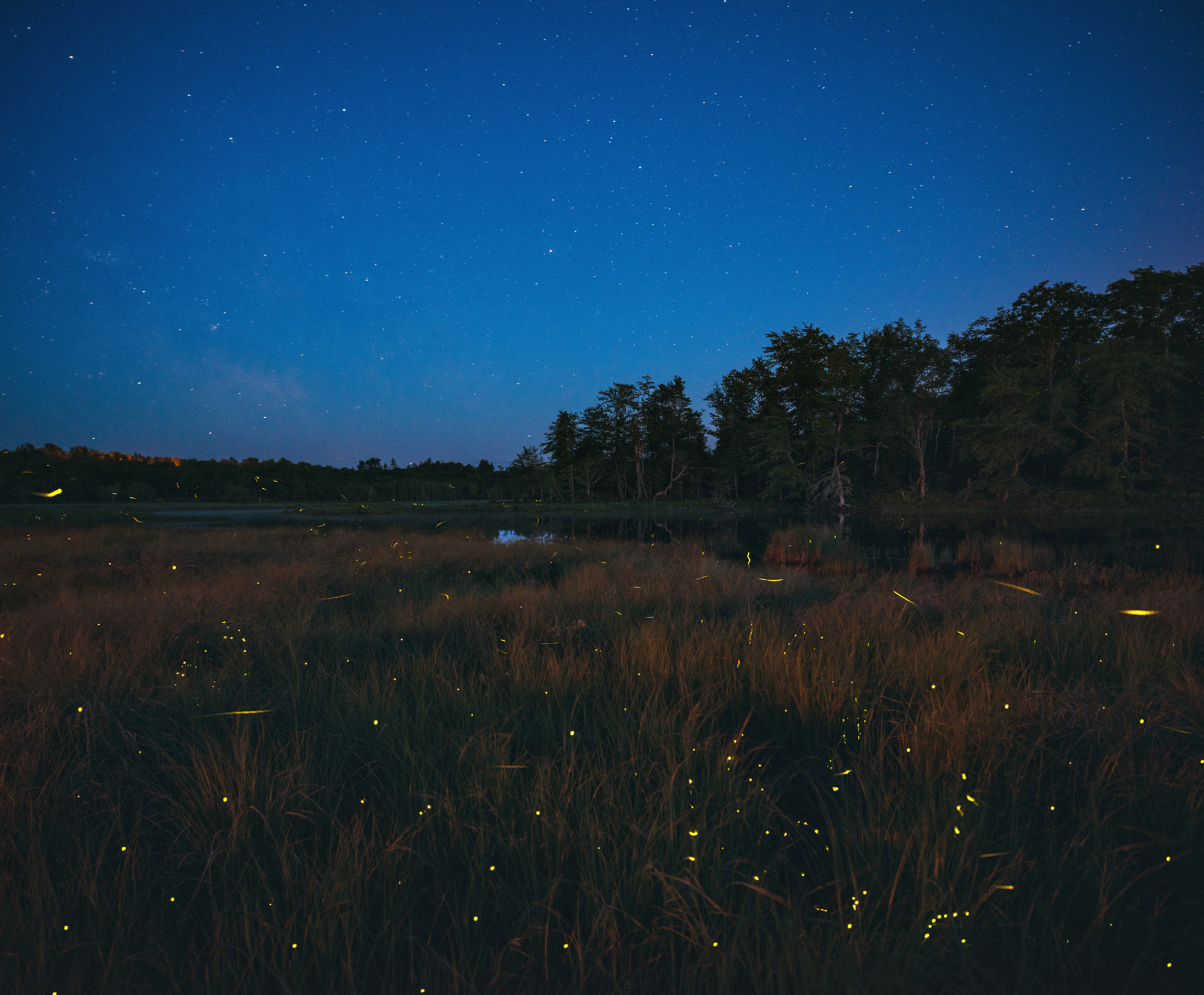
Fireflies glow across Texas fields during early summer and early fall
At the beginning of each Texas summer, the dusk comes alive with drifting fireflies. In some parts of the state, the insects flit about the canopy; in others they spread in twinkling carpets beneath the cedar trees, or buzz at waist height over the grass. The insects are as cyclical and weather-dependent as the state’s wildflowers, says Ben Pfeiffer, founder of Firefly Conservation & Research, a nonprofit. Some years, they’re everywhere. Others, you’ll hardly see one.
Pfeiffer—a sixth-generation Texan who works in web development and has a background in biology—has been interested in the glowing organisms for years. In 2009, he bought the domain firefly.org at auction and decided to start a website documenting the insects as a New Year’s resolution. Soon enough, he was traveling the state, researching native species and learning how to photograph and collect specimens. “I got some incredulous stares when I walked into Texas A&M and said I was interested in fireflies,” he says.
There are multiple types of fireflies in Texas. The most common, Pfeiffer says, is the big dipper firefly (Photinus pyralis) that’s found all the way up the mid-Atlantic coast of the U.S. In East Texas, savvy viewers might spot the spring treetop flasher (Pyractomina borealis). In the Big Bend region, meanwhile, the sky island firefly (Photuris flavicollis) sticks to the wetter conditions of the Davis and Chisos Mountains.
Whatever the species, they tend to turn up around the same time. Texans are lucky to have two firefly seasons, Pfeiffer says. The first generally begins in May and can last until mid-July at the latest—once the temperatures start hitting the high 90s, fireflies disappear. When temperatures cool and rain returns in the fall, fireflies sometimes make an appearance in October. “This year’s going to be a relatively decent year, because of rainfall in the fall and winter, and a lot of good rainfall coming this spring,” he says.
A wet winter or fall is necessary for the larvae to find abundant prey. Drought conditions and hard freezes—such as the ones that have gripped the state over the last two years—tend to set the insects back.
Fireflies aren’t just pretty lights. All are toxic, with compounds in their bodies that make them distasteful (and occasionally fatal) for predators. While some fireflies can generate the compounds themselves, some might obtain them as larvae by feeding on milkweed roots. Others, like the “femme fatale fireflies,” lure in males of other species by mimicking their flashes and eat them, stealing their toxic compounds and incorporating them into their own eggs.
A lot of observable firefly behavior is males displaying for females, with each species having a slightly unique flight and flash pattern. “Some flash every 4 seconds, some double flash,” Pfeiffer says. “Down in the south, they’re amber-colored.”
Unfortunately, Pfeiffer says, fireflies are in serious decline throughout the country. Eighteen percent of species are under threat, including in Texas. Many species are ever more squeezed by habitat fragmentation and new development, which can wipe out firefly populations permanently. It’s important for people to cultivate pollinator habitat and native plants, allow leaf litter to maintain soil moisture, and cut down on light pollution—all of which can help native fireflies thrive.
“This is the best it’s ever gonna get for fireflies in Texas right now,” Pfeiffer says, “so people should really get out to enjoy them.”








